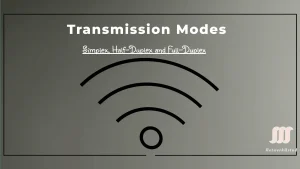PPP is WAN encapsulation protocol that was built in the 1990s. It is an open standard protocol so the protocol can be used with all vendors. Point to Point Protocol can work with Synchronous serial connection, Asynchronous serial connection, High-Speed Serial Interfaces (HSSI), ISDN interfaces (BRI and PRI) telephone lines, trunk lines, cellular telephones, specialized radio links, or fibre-optic links. Point to Point Protocol is provided dynamic addressing, authentication, callback and compression services. The protocol encapsulates multiple network layer protocols to pass theme over the same link. It also performs error detection, correction and quality check of link. PPP is supported single logical connection over several physical connections. PPP is reach feature protocol as compared to HDLC.
Point to Point Protocol is working on the data-link layer and was originally developed to encapsulate higher network-layer protocols to pass over synchronous and asynchronous communication lines. Point to Point Protocol can also establish other network standards, including network protocol multiplexing, session negotiation, and data-compression negotiation. It also supports protocols other than TCP/IP, such as IPX/SPX and DECnet. The PPP uses three components to transmit data over a serial point-to-point link. Each of the three components has separate function but requires the use of the other two to complete their tasks. The components are Framing, LCP and NCP. The components will be discussed in the next lessons.
Benefits of PPP
We know that PPP was originally designed as an encapsulation protocol for transporting TCP/IP traffic over point-to-point links. It provides a standard method for transporting multi-protocol packets over point-to-point links. PPP has many features that are not available in HDLC. The link quality management feature monitors the quality of the link. If too many errors occur, PPP takes the link down. PPP supports PAP and CHAP methods for authentication that will be explained in a later section. Other advantages of link-state are the following:-
Cost – The PPP links separate networks via the internet, which has been shown to help reduce cost by reducing the need for specialized hardware and software.
Easy Troubleshooting- Troubleshooting of point-to-point network is easy due to layered architecture because all layers are relevant to each other. So, one layer will troubleshoot and free itself from problems and then further troubleshooting determines easily which layers are having problems.
Resiliency – Traditional WAN technologies only uses sharing links for data communication between remote networks, but now the network can provide a significant level of flexibility. For example, users of WAN technologies can experience interruptions, which lead to loss of data. But on the internet, Protocol is used to automatically change the broken route all before they are arrive at their intended destination.





